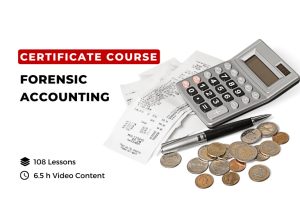- Introduction to the Program
- Introduction to This Module
- What is Fraud – its Extent
- What is the Scale of The Problem?
- Why is Fraud Committed?
- Different Types of Fraud Schemes
- Impact of Fraud on Organization
- Case Study – a real-life case of fraud that happened in an organization
- Module Summary
- Multiple Choice Quiz
- Introduction to This Module
- What is Fraud Risk Management?
- Strategic Fraud Risk Management and the “4Ts” Approach
- Risk-Based Approach to Fraud Risk Management
- Module Summary
- Multiple Choice Quiz
- Introduction to This Module
- Overview 7-Step Fraud Risk Assessment Framework
- Step 1: Identify potential inherent fraud risks and schemes
- Step 2: Assess the likelihood of identified inherent fraud risks
- Step 3: Assess the impact of identified inherent fraud risks
- Step 4: Evaluate which people and departments are most likely to commit fraud
- Step 5: Identify and map existing controls to relevant fraud risk
- Step 6: Evaluate whether the identified controls are operating effectively and efficiently
- Step 7: Identity, evaluate, and respond to residual fraud risks that need to be mitigated
- Module Summary
- Multiple Choice Quiz
- Introduction to This Module
- Overview 8-Step Fraud Risk Management Program Framework
- Step 1: Define program objectives
- Step 2: Assess fraud risks
- Step 3: Design program components
- Step 4: Implement program components
- Step 5: Communicate expectations
- Step 6: Ensure compliance
- Step 7: Identify and investigate violations
- Step 8: Measure, evaluate, and report program effectiveness
- Module Summary
- Multiple Choice Quiz
- Introduction to This Module
- Overview of Internal Controls
- Control Characteristics
- Role of Audit in Fraud Prevention and Detection
- The External Audit
- The Internal Audit
- Module Summary
- Multiple Choice Quiz
- Fraud Prevention Controls
- Key Aspects of Prevention – Generic Controls
- The Six Key Fraud Prevention Controls
- Module Summary
- Multiple Choice Quiz
- Final Assessment







